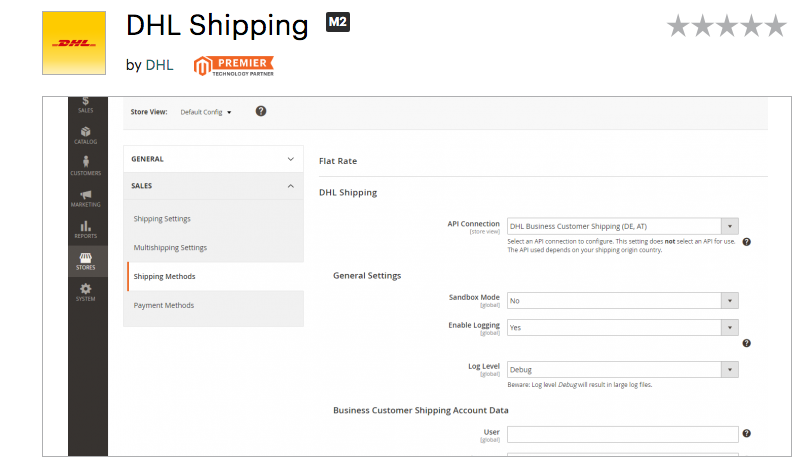DHL’s ecommerce API v4 is a comprehensive platform that enables businesses to connect to DHL’s shipping network to get real-time rates, create shipping labels, and track packages. The API is easy to use and can be integrated with a variety of ecommerce platforms. It has a wide range of features that makes shipping and tracking easy and efficient.
DHL ecommerce API v4
If you’re looking for a comprehensive and user-friendly eCommerce API, look no further than DHL eCommerce API v4. This powerful API enables developers to easily integrate DHL eCommerce shipping capabilities into their eCommerce platforms and marketplaces.
DHL eCommerce API v4 offers a wide range of features to make shipping easy, including support for multiple shipping methods, tracking, and real-time shipping quotes. The API also provides developers with access to DHL’s large network of shipping partners, which gives users access to the best shipping rates.
Overall, DHL eCommerce API v4 is an excellent choice for developers who need a robust and user-friendly eCommerce shipping solution.
What is the DHL ecommerce API v4?
The DHL ecommerce API v4 is a shipping API that allows you to integrate your ecommerce store with DHL. This API gives you access to DHL’s world-class shipping capabilities, including real-time tracking, address validation, and more.
With the DHL ecommerce API v4, you can easily add DHL shipping to your ecommerce store. This API makes it easy to get started with DHL shipping, and it’s easy to use. You can use the DHL ecommerce API v4 to ship to any address in the world, and you can track your shipments in real time.
The DHL ecommerce API v4 is a great way to add DHL shipping to your ecommerce store. This API is easy to use, and it gives you access to DHL’s world-class shipping capabilities. If you’re looking for an easy way to add DHL shipping to your ecommerce store, the DHL ecommerce API v4 is a great option.
How to get started with the DHL ecommerce API v4?
The DHL ecommerce API v4 is a powerful tool that can help businesses streamline their shipping process. Here’s how to get started with the DHL ecommerce API v4:
1. Register for a DHL ecommerce account.
2. Generate your DHL ecommerce API key.
3. Choose the DHL ecommerce API endpoint that you want to use.
4. Test your DHL ecommerce API connection.
5. Start using the DHL ecommerce API v4.
How does the DHL ecommerce API v4 work?
DHL ecommerce API v4 is a set of programming instructions that allow software to interact with the DHL ecommerce platform. It enables developers to create applications that can send and receive shipping information, track shipments, and create shipping labels.
The DHL ecommerce API v4 is organized around REST. Each resource in the API is accessible via an HTTP method:
POST – Create a new resource
GET – Retrieve a resource
PUT – Update a resource
DELETE – Delete a resource
The DHL ecommerce API v4 uses standard HTTP status codes to indicate the success or failure of an API request.
200 – OK
400 – Bad Request
401 – Unauthorized
404 – Not Found
500 – Internal Server Error
The DHL ecommerce API v4 uses the following response formats:
JSON – JavaScript Object Notation
XML – Extensible Markup Language
The DHL ecommerce API v4 supports the following methods of authentication:
API Key
HTTP Basic Authentication
API keys are used to authenticate API requests. They are generated by DHL ecommerce and are unique to each developer.
HTTP Basic Authentication is a standard method of authenticating HTTP requests. The username and password are encoded using the RFC 2617 standard and then transmitted in the HTTP header.
What are the benefits of using the DHL ecommerce API v4?
The DHL ecommerce API v4 is a powerful tool that can help businesses streamline their shipping and logistics processes. By using the API, businesses can automate their shipping and tracking, making it easier to keep track of their inventory and shipments.
The API can also help businesses save money on shipping costs by allowing them to compare rates from multiple carriers. In addition, the API provides access to a wide range of features that can help businesses improve their customer service and operations.



